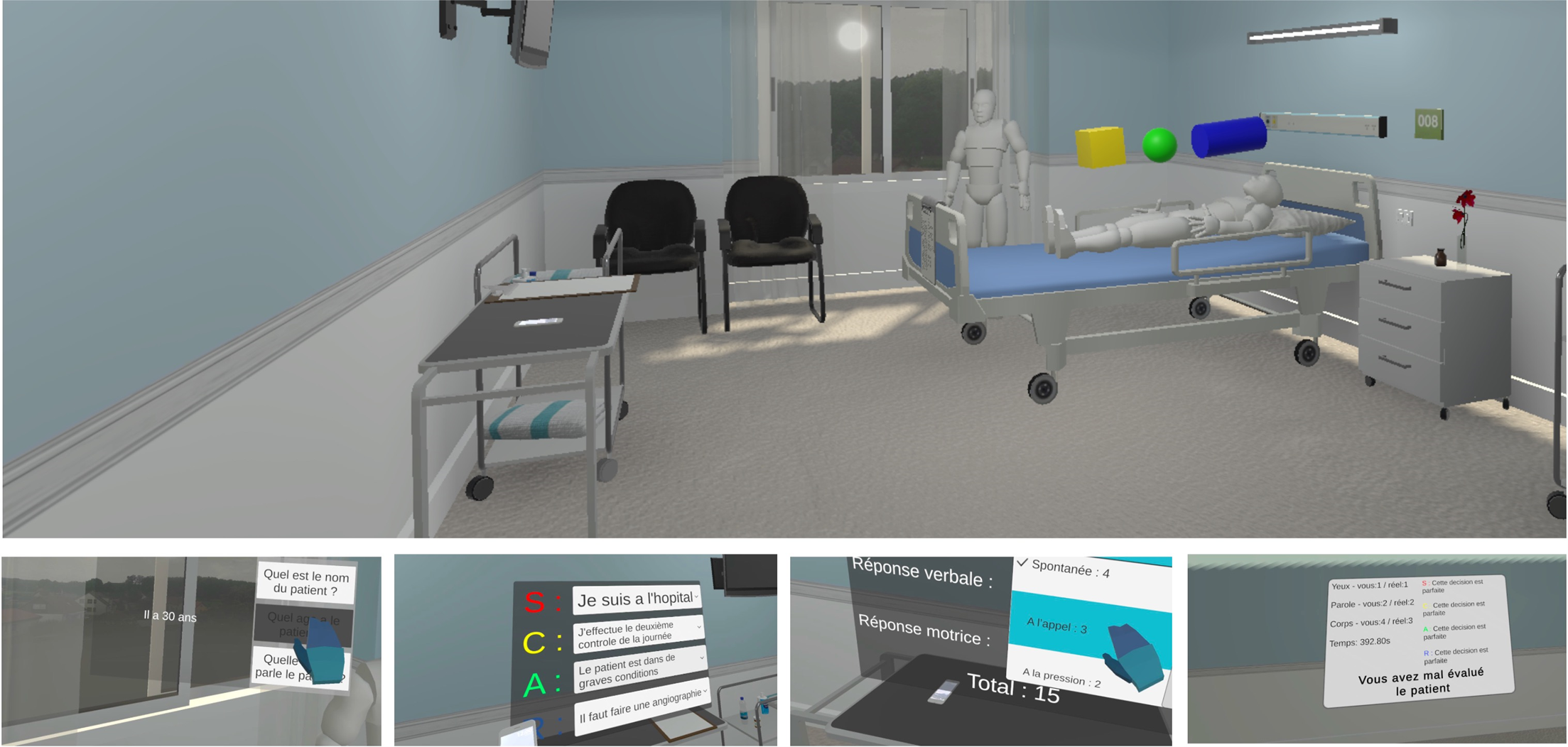GlasCoSS - Glasgow Coma Scale Simulator
Engineering and Architecture

The Glasgow Coma Scale (GCS) is a neurological instrument that measures the “severity” and extent of impaired consciousness. The GCS has become the most used tool in the world to document alterations in the level of consciousness caused by brain damage (Ingram, 1994). In combination with other neurological examinations, the scale is used to estimate the vital prognosis of patients with a severe brain injury. Because of its ease of use for all health professionals in all care settings, the scale has become an essential tool in all training programs. The neurological evaluation requires frequent simulation-based education to improve the cognitive, psychomotor and communication skills of the health students. However,
current simulation approaches are resource-intensive and not routinely offered in all healthcare schools. Also, alternative approaches are needed to improve working memory, decision-making skills and teamwork performance. Serious games may be effective and more accessible alternatives if they use active, practical, and problem-based learning. They are indeed likely to solicit the student motivation and allow them to develop knowledge in complex learning situations.
GlasCoSS (Glasgow Coma Scale Simulator) is a gamified simulation tool allowing to immerse learners in realistic, but gamified VR situations to train them on GCS. The tool consists in placing the learner in challenging mission-based situations requiring performing evaluations of patients encountered during the missions. With such a scenario, the patient diagnosis becomes one of the challenges to be met, thus motivating the learner, and imposing various constraints: time, congestion, sound effects, noise, etc. GlasCoSS has three objectives :
-
Allow the student to experience a real situation in a virtual context and thus retain more information on the use of the Glasgow Coma Scale
-
Assess the possibility of using digital technologies to support active pedagogy, constructivist, and socio-constructivist approaches.
-
Evaluate the potential use of the collected data in the simulation for educational research.
Two major challenges had to be considered when developing GlasCoSS. The first was related to the modelling of patients to let the learner make a realistic diagnosis in accordance with the recommended professional practices. The second was the gamification of the simulation and the construction of a rich (various scenarios), customizable (customizable situations), and pedagogical (educational support) tool.
GlasCoSS is a virtual reality simulation tool that enables to practice on the Glasgow Scale of Consciousness assessments of patients. This tool has been designed and developed by combining three essential aspects:
-
The realism of the medical diagnosis: indeed, the learning of the professional practices related to the evaluation of a patient’s state of consciousness requires a precision in the visualization of the vital indicators. However, in a Virtual Reality situation, it is not always easy to represent and capture these indicators. Taking the patient's pulse is an example of this difficulty in the absence of a haptic device.
-
Gamification: we wanted to gamify the developed simulations to make the tool attractive and engage the learners' motivation. Thus, the simulations are always implemented in the form of missions integrating patients that must be diagnosed in order to progress and obtain clues or resources. Several playful aspects have been used such as time, rewards, progression, and even collaboration, in a future version.
-
The integration of pedagogical supports: considering the intended use, it was necessary to integrate pedagogical supports in the simulation. These supports were integrated in the form of resources that the learner has in limited number during his missions and whose use requires counterparts.
As mentioned in the previous section, the GlasCoSS project incorporates two interesting innovations. The first innovation is the transformation of the diagnostic process according to the GCS into an immersive virtual reality version. This transformation allows a viable and acceptable intermediary between the largely insufficient theoretical learning and the difficulty to achieve, and highly resource and time constrained real situation learning.
The second innovation of the project is to transform the training on diagnosis according to the GCS into a Serious Game in the form of an adventure game (Quests and Missions) and to transform the two serious processes of this training into gameplay elements. Indeed, with this simulation-based Serious Game, diagnosing a patient’s state of consciousness becomes a challenge among others allowing to progress in the quest. Thus, by making the right diagnosis and taking the right decisions we can save the patient and obtain rewards in the form of clues and/or resources. The second aspect that has been gamified is the access to educational resources that become in our Serious Game resources like others that are constrained: limited number and costly. This even allows us to enhance the value of these resources in the learner's subconscious.